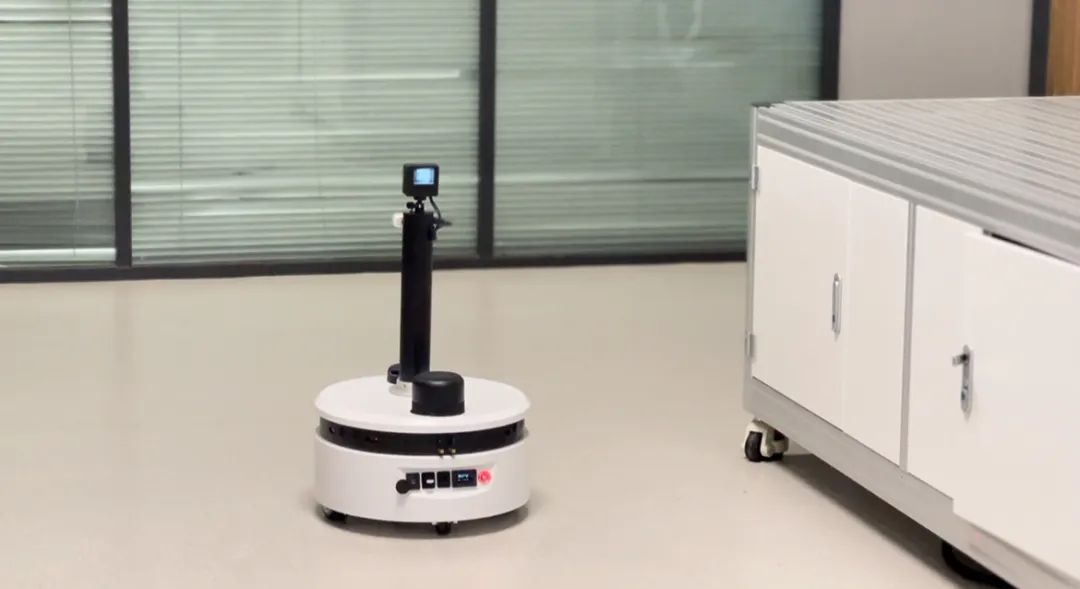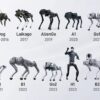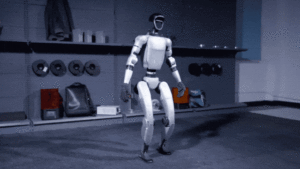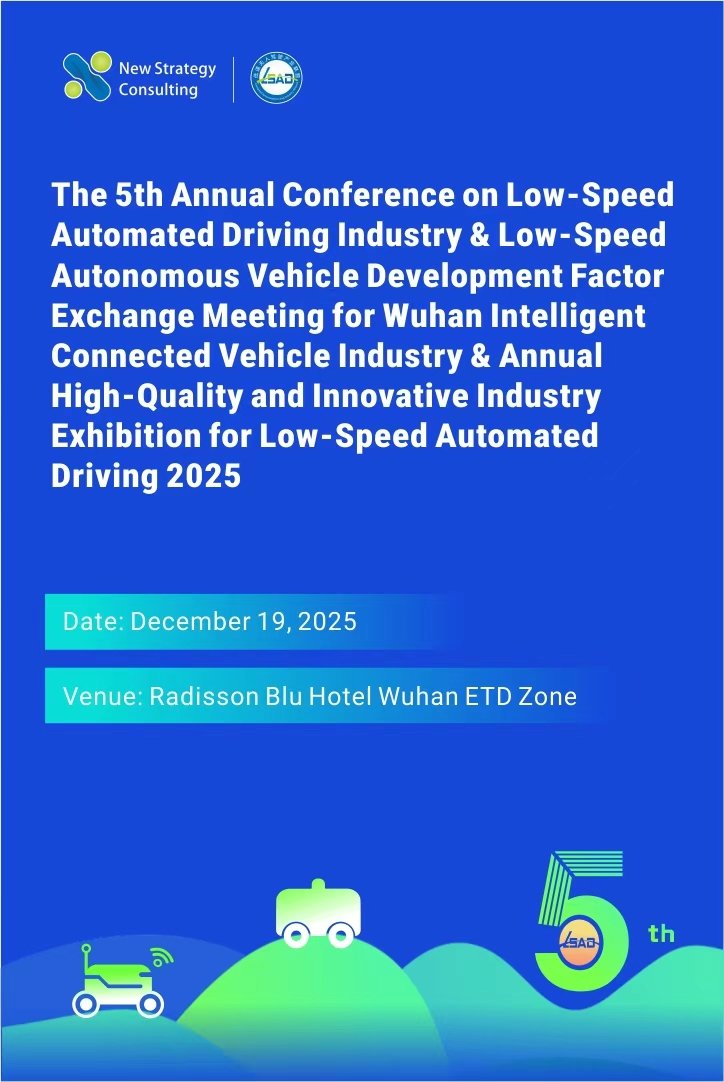Mairui Robotics – New Underlying Forklift Robot
Mairui Robotics has newly developed an underlying forklift robot that utilizes QR code navigation, laser SLAM navigation, and texture navigation technologies for precise positioning. It supports handling, transporting, rotating, and lowering of goods up to 1000 kg. Equipped with a dual-wheel differential drive, it allows smooth and flexible movement, including forward, backward, and rotational control. This robot is suitable for industries such as 3C electronics, food, pharmaceuticals, new energy, tobacco, express delivery, and e-commerce. It can be used in logistics sorting, interfacing with ground roller lines, pallet-to-person systems, and automatic interfacing with depalletizing machines. Additionally, it can directly interact with ground roller lines, elevators, cargo lifts, air shower doors, and other equipment to achieve automatic and efficient transport.

RobotPlusPlus – HighMate C20 Cargo Hold Cleaning Robot
RobotPlusPlus, an engineering company specializing in aerial work robots, unveiled its new HighMate C20 cargo hold cleaning robot at the 2024 SMM Maritime Exhibition in Hamburg, Germany, through a live demonstration. The HighMate C20 robot is equipped with five powerful 500-bar high-pressure nozzles, offering a cleaning width of up to 1 meter with a coverage rate of 95%. Its maximum working pressure is 100 times that of a traditional fire hose, allowing it to clean up to 500 square meters per hour.
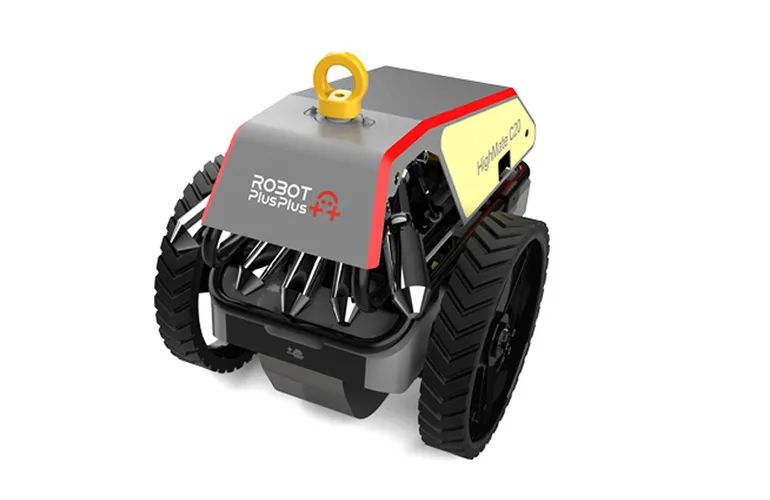
Rethink – AMR and Composite Robots
Rethink has developed the new MRE 550 AMR and heavy-duty MRE 1400 AMR, with payload capacities of up to 550 kg and 1400 kg, respectively. Both AMRs feature integrated lifting functions and use multiple sensing modes to observe the environment in real time with 360-degree coverage. These AMRs utilize Simultaneous Localization and Mapping (SLAM) for environmental visualization, dynamic obstacle avoidance, and path planning.
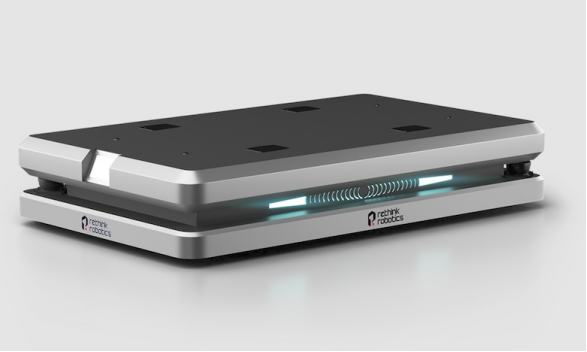
Rethink’s composite robot combines the Ryder AMR with the Reacher cobot and a portable battery pack. The company notes that the innovation lies in the detachable and reconfigurable mechanical arm and AMR, each equipped with its battery pack, requiring separate charging.
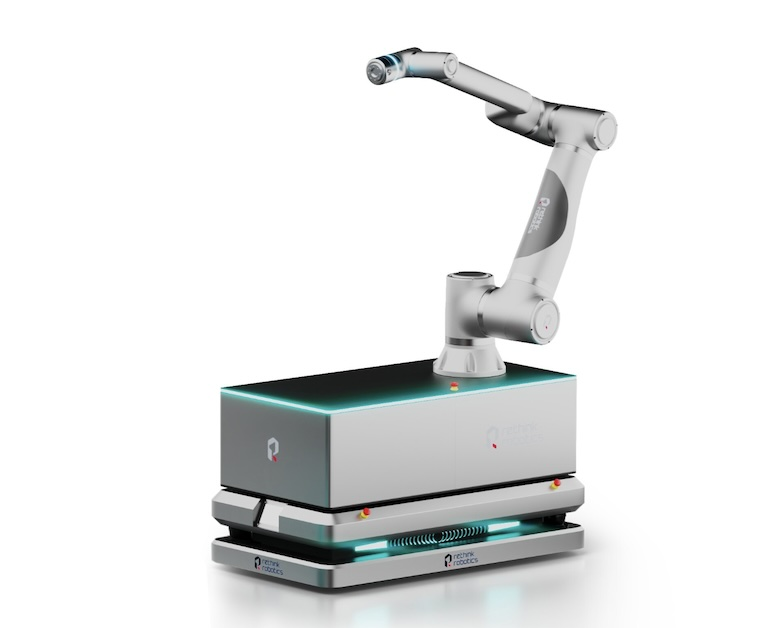
PickNik Robotics – Composite Robot MoveIt Pro 6
MoveIt Pro 6 is a robot designed for bathroom cleaning, capable of real-time object recognition and dynamic path planning. It is equipped with force compatibility and IO controllers and supports full-body control of mobile manipulators. Additionally, MoveIt Pro 6 includes smart runtime decision-making capabilities, simplifying multi-step operations and allowing the robot to overcome unexpected obstacles or environmental changes. It can adjust and learn on its own in response to changes in object size, weight, or orientation.

NexAIoT – Next-Generation AI AMR
NexAIoT has developed the NexMOV-2, an AMR specifically designed for industries such as logistics, manufacturing, and healthcare. Unlike traditional indoor AMRs that rely on 2D LiDAR for localization, the NexMOV-2 utilizes Kudan’s camera-based Visual SLAM to handle all localization tasks, enabling precise real-time mapping and navigation, improving performance in dynamic environments, and reducing costs by 30%. It also features an intelligent autonomous docking system that ensures continuous operation through wireless charging, significantly reducing downtime.

Gessmann – New Autonomous Mobile Robot
Gessmann’s new autonomous GESSbot Gb 350 uses radar sensors and digital maps to precisely navigate along the required routes. It can flexibly adapt to new situations, identify and avoid obstacles, and transport loads of up to 350 kg through both wide and narrow passages. Additionally, Gessmann emphasizes smooth interaction between humans and machines, with the GESSbot communicating with its surroundings via sound systems, displays, and LED indicators. Its battery lasts up to 12 hours.
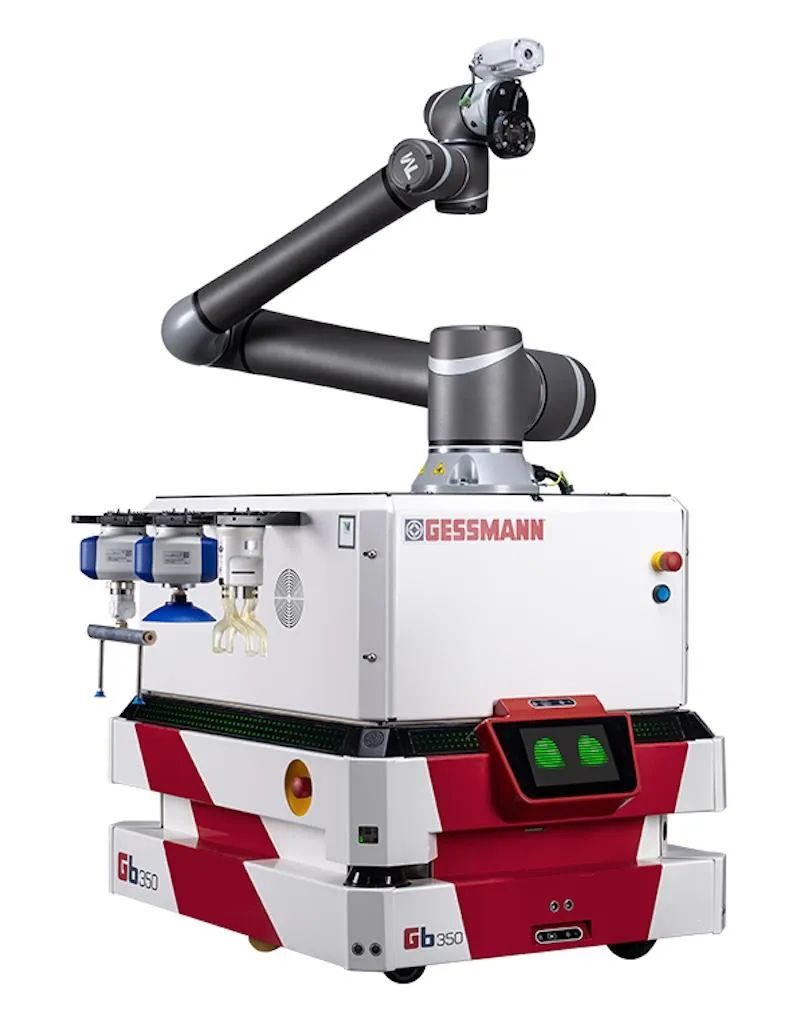
Pengfei Group & SIASUN – Unmanned Mining Robot
This robot integrates “laser + millimeter-wave” radar technology to achieve high-precision navigation and intelligent path planning. It is equipped with a dual-light gimbal system (“visible light + infrared”) for image and temperature collection, which is analyzed in real-time by an AI recognition system. The robot also features gas detection and sound detection sensors to monitor dangerous gas concentrations and equipment operating sounds. An elevating mechanism ensures adjustable gimbal height, enhancing the robot’s adaptability for inspections. It can operate continuously, replacing workers in equipment inspections to ensure uninterrupted operations and safety.
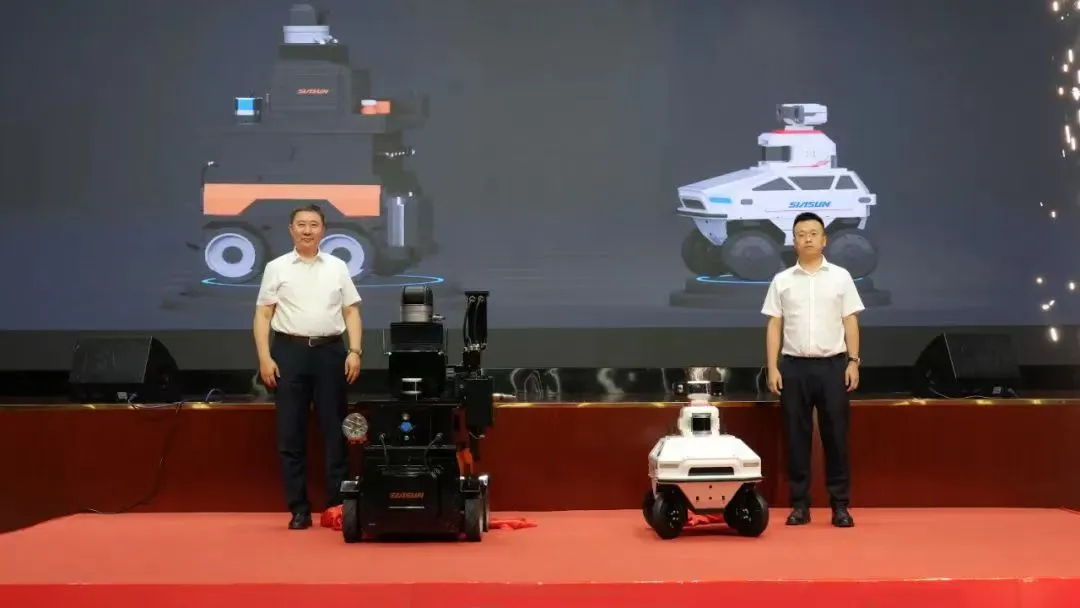
Jaten Robotics – UGV Unmanned Ground Vehicle
Jaten has launched its latest UGV (Unmanned Ground Vehicle) with a load capacity of up to 1000 kg. This unmanned vehicle integrates 3D panoramic obstacle avoidance technology and features Jaten’s independently developed intelligent navigation system, capable of mapping areas up to 5 square kilometers with positioning accuracy below the centimeter level. It can reach a top speed of 30 km/h, primarily focusing on outdoor logistics scenarios in campus environments.
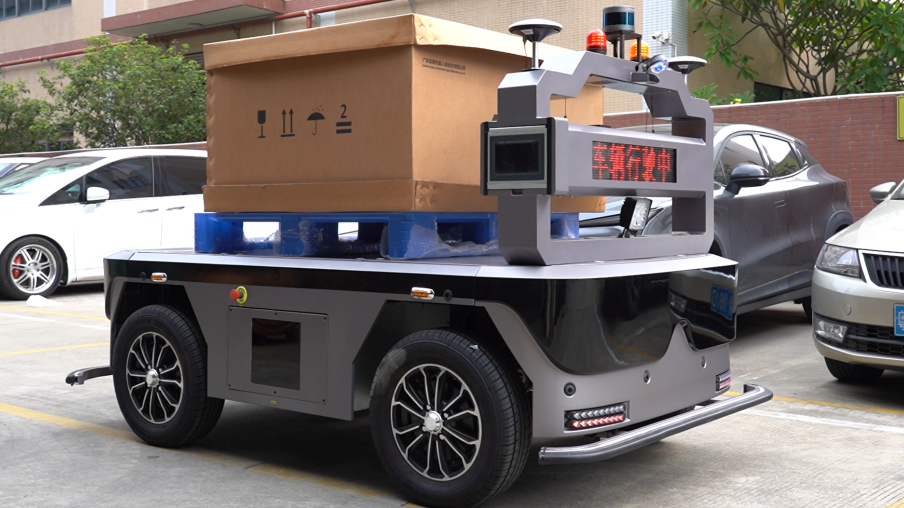
Gen-song Intelligent – New Counterbalance Unmanned Forklift
The new generation of counterbalance forklift robots (X-FMR) is built on a dedicated platform, supporting indoor and outdoor operations and ride-on models. It can handle large loads of dual-pallet cargo and operates stably on steep slopes with up to a 20% incline. The vehicle features IPX4-level waterproofing, significantly expanding its operating radius, and making it suitable for all-weather use, including in rainy and cold storage environments.
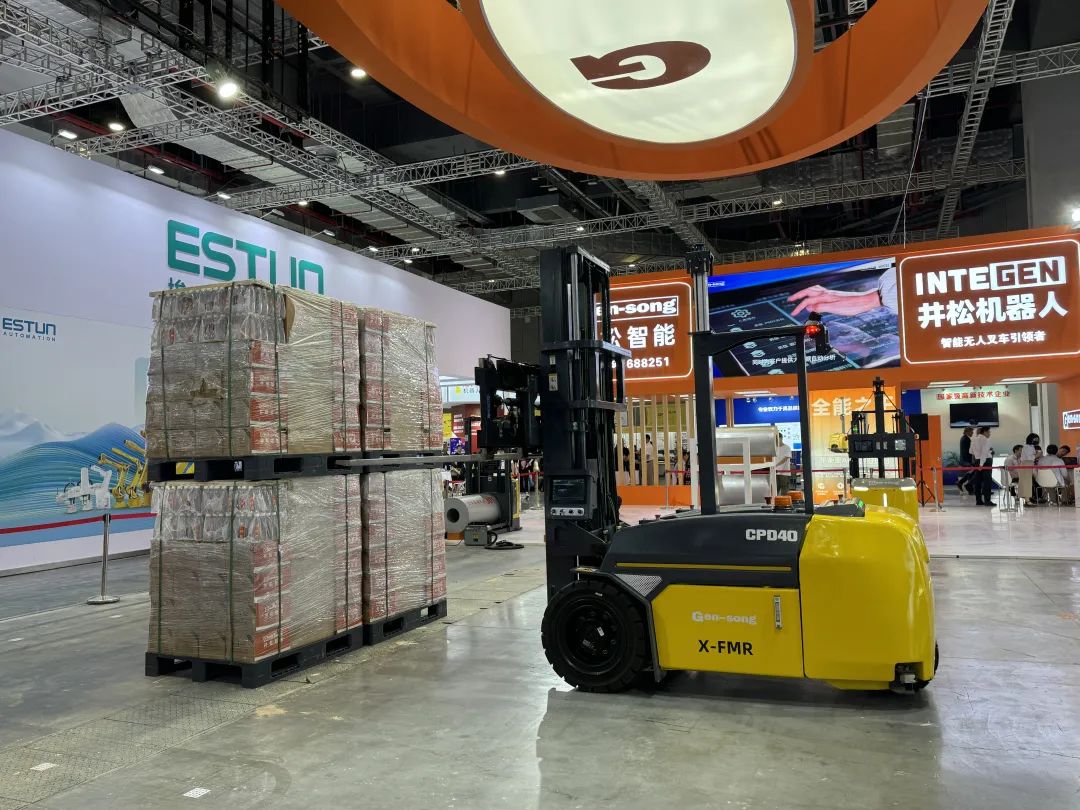
KUKA Mobile Robot – 600kg-class AMR
KUKA has pre-released its new 600kg-class autonomous mobile robot, the KMP 600P, which features laser SLAM and QR code fusion navigation. It has a maximum lifting range of 80mm and meets CE, CTUVus, and FCC certifications. The robot also supports wireless charging and is targeted at industries such as automotive parts and general manufacturing, focusing on the European and American markets.
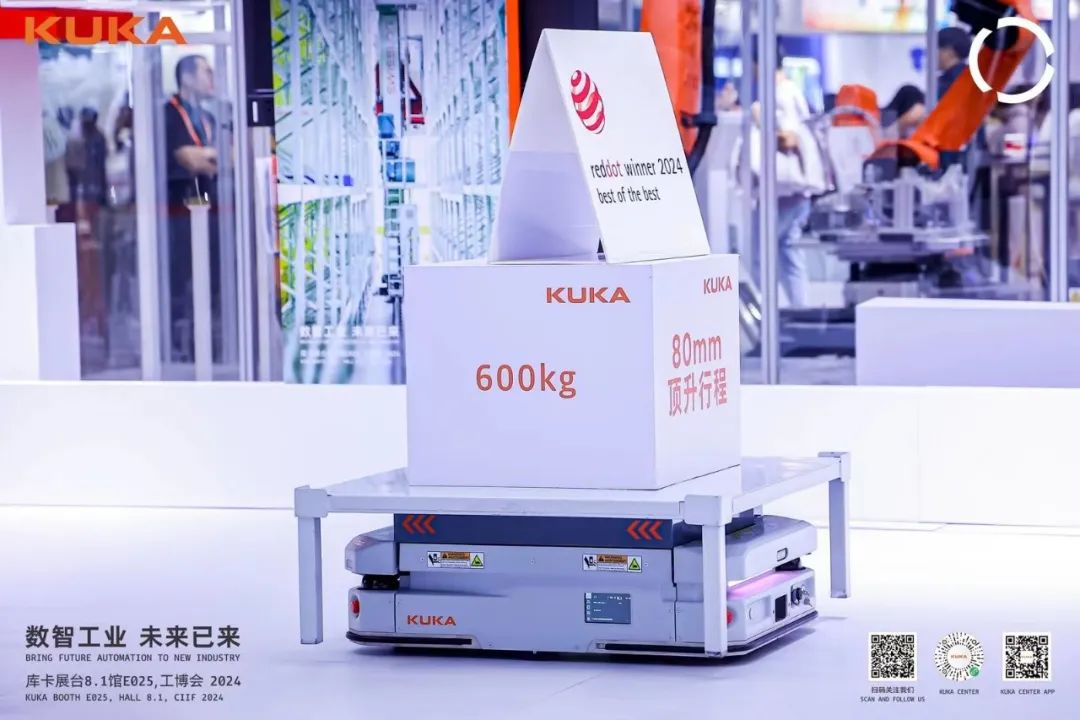
VSTC – Open-source Little Ant Mobile Robot
The open-source Little Ant mobile robot chassis adopts a two-wheel differential structure with computing power of up to 21 TOPS. Its software is based on the ROS system and supports various development languages as well as MATLAB/Simulink for MBD development. The electromechanical control system hardware is based on STM32, and the software runs on the freeRTOS embedded real-time system, developed in C. The robot includes multiple sensor modules, such as indoor LiDAR, voice sensors, IMU sensors, vision sensors, ultrasonic sensors, and various range sensors. The product also features self-developed multi-sensor fusion algorithms and high-precision positioning and navigation algorithms, with support for multi-agent swarm control algorithms.
